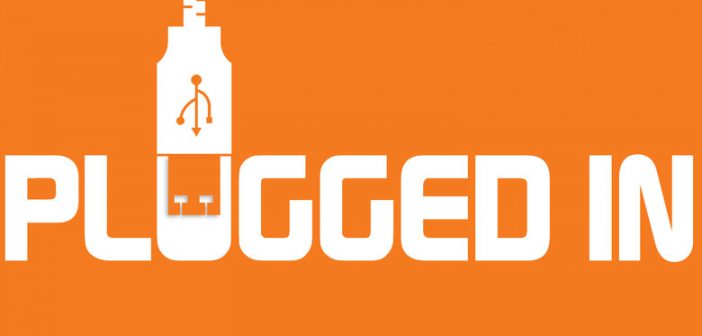by NICK FORTUNA
“Why not give them what they want and boost your hotel’s bottom line?”
Some hotel guests would give just about anything for a few more hours in bed before checkout, especially if it comes with just the push of a button. Why not give them what they want and boost your hotel’s bottom line?
That’s the message from Tim Butterworth, chief commercial officer of U.K.-based Crave Interactive Ltd., one of the many tech companies creating products aimed at increasing guest satisfaction while driving revenue for hotels.
Tablets and similar in-room devices digitally display hotel features such as the hotel directory, room-service menu, and other necessary information. This allows guests to have easy access to a hotel’s services and amenities.
Butterworth says one feature that is popular with guests at a wide range of hotels is the late-checkout option. The hotel can program Crave’s operating system to send a digital message to all guests who haven’t checked out by a certain time and offer them the opportunity to stay a few more hours for a fee. All the guest has to do is hit a button on the tablet and the fee is added to the bill.
“People do click that button, and the hotel gets an instant return,” Butterworth says.
That is just one of the ways tech-powered guest connectivity can increase a hotel’s average profit per guest. Some hotels have already begun offering guests a chance to rent virtual-reality equipment and have immersive, seemingly real adventures right in their guestrooms. Butterworth says his company recently unveiled a tablet option that lets guests pay a few bucks for access to a suite of video games such as chess, basketball, Sudoku, and mahjong.
Manufacturers of the in-room devices tout their ease of use and high rates of guest engagement, saying they more than pay for themselves through the promotion of guest services and pay-per-use add-ons. The products can save hotels money by eliminating the need to print receipts, hotel directories, food menus and information about transportation and the local area.
“Tablets remove the need for any paper in the room,” Butterworth says. “We have all seen directories in the room that are coffee-stained, dog-eared and have seen better days, and very often the information is out of date. With the tablet, any cost of printing paper and providing information in the room is eliminated.”
Since the information is displayed digitally, it can be easily updated according to a schedule or on the fly, so the hotel can change its prices on food, beverages and services according to demand. Weekday prices on food can be different from weekend prices, and the price of champagne can be raised on New Year’s Eve. The devices can advertise the hotel’s breakfast buffet, room-service specialties, and late-night specials.
The wide range of in-room tech products provide a window into the hotel of the future, one where technology has streamlined guest services and hotels never fail to showcase all they have to offer.
According to a March report in Ad Age, leading hotel companies such as Hilton and Marriott are investing heavily in an effort to make the hotel of the future something to behold. Late in 2017, Hilton announced that it was opening its first “Innovation Gallery,” an incubator and showcase for new technologies located near its McLean, Va., headquarters. Marriott started its own innovation lab in Maryland in 2016 and is using it as a “live beta” investigation into new amenities, Ad Age reports.
The Ad Age article envisions a future hotel environment where guests can check into their rooms by having their eyes scanned. Each room’s augmented-reality command center will be able to visually transform the guestroom into an exotic place, such as the middle of a rain forest or the cabin of a spaceship.
If that all seems a bit farfetched, then let’s focus on how hotels are embracing the future of guest connectivity right now.
In-room tablets. Tablets strategically placed in the guest rooms provide full access to all the information a guest could need about hotel services, local attractions, transportation services, news, and weather reports.
The devices allow the hotel to send messages to groups of guests, such as conference attendees, or individual rooms. The messages can be used to promote guest services such as spas or the restaurant and offer flash discounts. A hotel can encourage enrollment in loyalty programs by sending guests a message thanking them for their stay and pointing out how many loyalty points they would have earned had they been enrolled. Guests can check-out electronically and bypass the line at the front desk.
The tablets’ full range of functions varies, but most are simple to install and just require a good power supply and Wi-Fi connection. The risk of theft is minimal since they do not function outside of the hotel. They can perform all of the functions of a clock radio, eliminating the need for one of those in every room, and most have USB ports to charge cellphones and other devices.
Some tablets use voice-interaction software programs, similar to Apple’s Siri or Amazon’s Alexa so guests can tell the tablet to adjust the lighting or room temperature. They can order food, make dinner reservations, call for housekeeping, contact the front desk, and even make hands-free phone calls.
While some hotels, particularly those that cater to senior customers, might be leery of relying too heavily on in-room tech gadgets, Butterworth says their ease of use makes them popular with almost all guests.
“The advantage of being digital is that it’s very flexible,” Butterworth says. “We see the future as having a tablet in every room, whether it’s a budget hotel, a midscale hotel, or a luxury hotel. Once a hotel brings digital content into its rooms, it doesn’t go back.”
Virtual-concierge smartphone apps. For your hotel to truly connect with millennials, it has to secure a spot in their phones. A host of companies have developed smartphone apps that can be customized for each hotel and serve as a 24-hour resource for guests.
Since guests can download the app before they arrive, hotels can get a jump on building a relationship with them. Guests can see photos and videos of their guestroom, the pool, fitness room, and restaurant and make dinner reservations or spa appointments well in advance. Some of the apps allow guests to connect with the hotel on Twitter, TripAdvisor, Facebook, and even visit the hotel’s booking site to check their reservations.
Guests can use the apps to order food, call housekeeping, contact the front desk, and they allow visitors to take the guest directory out of their room with them and seek out recommended restaurants and other attractions. The entire experience becomes portable and information becomes easily accessible at all times for the guests.
Tablets in the lobby. These devices help address one of the most common reasons guests become dissatisfied – having to wait in line. And, front-desk employees suddenly find themselves free to deal with guests who have more complex questions or issues.
Tablets placed in the lobby can digitally display the answers to frequently asked questions, the hotel directory, information about local attractions, and transportation schedules. Some tablets even give guests the convenience of printing their boarding passes in the lobby.
Lighted smart mirrors. These futuristic-looking mirrors are for much more than just making sure your tie is on straight. They connect guests to hotel services and provide the same digital information as tablets.
Some of the touchscreen mirrors can serve as a radio, display an LED television screen, play white-noise sounds to help guests fall asleep, and wake them up with music and by turning on the lights. Guests also have the ability to control the room’s temperature and open or close the blinds.
The lighted mirrors allow women to change the color or intensity of the light to closely match the environment they expect to be in, such as a nightclub or outdoors, so they can apply their makeup perfectly. The lighting also can be adjusted to create the guest’s preferred ambiance in the room.
Virtual reality. In 2015, Marriott launched its virtual-reality guest service, VRoom Service, which allows guests to order virtual-reality experiences to their rooms. VRoom Service, created in partnership with Samsung, lets guests have a VR headset and headphones delivered to their rooms as an add-on service for 24 hours.
The company initially rolled out three “VR postcards,” which allow the guest to follow a real traveler on a journey to a unique destination via virtual reality. Viewers feel like they are at the destination, and can hear the traveler speak about what he enjoys most about that particular place. The first three VR Postcards were shot in the Andes Mountains in Chile, an ice cream shop in Rwanda, and in the bustling streets of Beijing.
Other hotel brands such as Best Western and Holiday Inn are experimenting with virtual reality as a way to showcase their guest services, hotel amenities, and make them come alive for guests. The same technology also can be used to provide information about the local area and attractions. ■
PHOTO CREDITS:
All Plug Icon: PHIPATBIG/SHUTTERSTOCK.COM
Crave Tablet Design: CHESKY/SHUTTERSTOCK.COM




